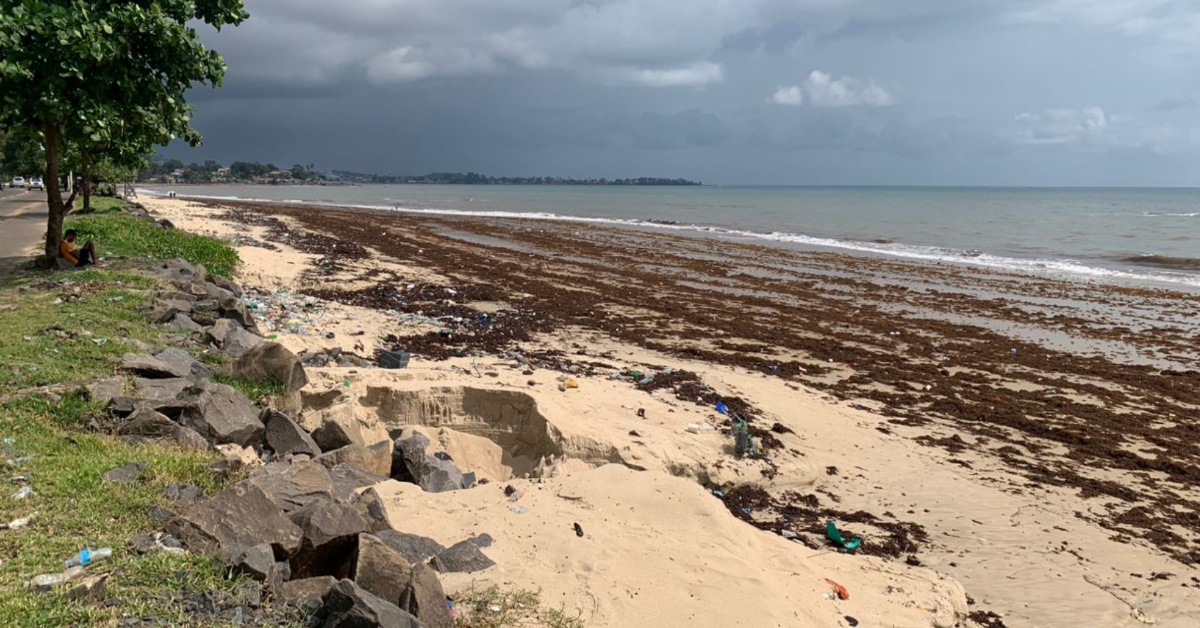Lumley Aberdeen Beach, a beloved weekend escape for many, is once again shrouded beneath a thick blanket of seaweed, transforming the once serene beach into a sprawling, green expanse. The return of this natural phenomenon has stirred both concern and curiosity among locals and visitors alike.
As dawn breaks over the peninsula, what should be a tranquil beach scene is marred by the sight of enormous heaps of seaweed. The once golden sands are now obscured by the dense, brown algae that stretches for miles along the shore. The unmistakable smell of the rotting seaweed hangs in the air, a pungent reminder of the natural processes that cause this phenomenon. For beachgoers, the seaweed’s reemergence is more than just a visual and olfactory disturbance. It’s a disruption to their cherished weekend routines and a challenge to their resilience.
“I’ve been coming to Lumley Beach every weekend for the past three years,” says Michael Kamara, a local football enthusiast. “This is the first time I’ve seen it like this. We had to spend over 30 mins clearing this area just so we could play our Sunday football match. It’s definitely not the fun day at the beach we were hoping for.”
The seaweed invasion, which first appeared in 2011, has sparked numerous theories about its causes. Some believed that offshore oil drilling and mining activities were to blame for the algae blooms. However, recent statements from the environmentalints suggest otherwise.
An investigation into the is occurrence in 2011 indicates that it is a natural occurrence, the research further notes that while there are high levels of nutrients in the coastal waters, which can promote algae growth, this is not related to mining or exploration activities since the phenomenon has been observed in other countries as well.
The seaweed currently covering Sierra Leone’s beaches is primarily Phaeophyta or brown algae. These large, dense mats of seaweed create a unique environment for marine life, but for those seeking a day at the beach, the impact is less than ideal. “The beach used to be so inviting,” says Fatmata Kamara, a frequent beachgoer. “Now, It’s covered in seaweed and smells terrible.”
Despite the challenges, many are finding ways to make the best of the situation. John Bangura, a resident and beach lover, is one such person.
“Sure, it’s a hassle to navigate through the seaweed, but there’s still something special about being here, he says. It’s a part of nature, and it reminds us that the environment is always bound to change”
Mariama Sorje, a mother enjoying a day out with her kids, adds, “We couldn’t let the seaweed ruin our day. The kids. had fun collecting bits c seaweed for their own creations. It’s not what we expected, but we made the most of it.”
Environmental researchers have noted that the influx of seaweed is linked to high nutrient levels along the shores, which foster the growth of algae. This natural process, while inconvenient for beachgoers, plays a vital role in coastal ecosystems.
As the seaweed continues to accumulate, the beach community. remains hopeful for a resolution. For now, Lumley Aberdeen Beach serves as a vivid reminder of nature’s power and the resilience of those who love its shores.
“Seaweed or not, this is our beach,” says Abdul Sesay, a longtime – beachgoer. “Well adopted and keep coming back It’s part of the beat y and unpredictability of nature.”
As the sun sets on another day at the beach, the seaweed-covered sands offer a moment of reflection on the delicate balance between human enjoyment and the natural world.



 Post a comment
Post a comment 









